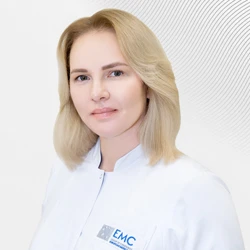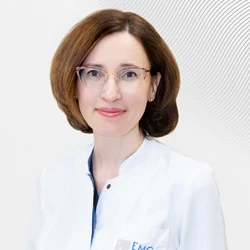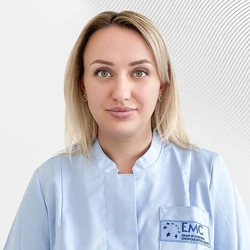Pediatric andrology studies the structure, functioning, diseases, and treatment methods of the organs of the male reproductive system of children from the moment of conception to puberty. A man's reproductive health is established even before his birth – during conception, during intrauterine development and childbirth, and is finally formed in childhood and adolescence. Pathologies of the reproductive system can be both congenital and acquired, and are caused by malformations, infections, neurogenic dysfunctions, injuries, and other factors.Pediatric andrology deals not only with the diagnosis and treatment of these pathologies, but also with the prevention of their development. In recent years, doctors have noted a significant increase in the number of andrological pathologies in children: phimosis, varicocele, hydrocele, spermatocele, hypospadias, epispadias, cryptorchidism, testicular torsion, balanitis, orchitis, etc. In most cases, late diagnosis and improper treatment of pathologies of the genitourinary system of children leads to infertility, impotence and other reproductive health disorders in adulthood. Parents' inattentive attitude to boys' health can lead to irreversible consequences in the future that can destroy a man's life and health.
Diseases such as phimosis and balanoposthitis are described in the first part of the article.:Pediatric andrology. When to see a doctor: Part 1 – balanoposthitis, phimosis.
Cryptorchidism;
A common congenital anomaly in children is cryptorchidism or the absence of both or one of the testicles in the scrotum, caused by a violation of the intrauterine process of testicular prolapse. During intrauterine development, the testicles form in the abdominal cavity and normally descend into the scrotum by the time of birth.The absence of a testicle in the scrotum occurs in 10% of premature newborn boys and 2-4% of full-term infants, however, spontaneous descent of the testicles into the scrotum is possible within six months. If this does not happen, then specialist intervention is required, since the longer the testicle is in the abdominal cavity, the more the reproductive function suffers.
It is also possible to develop secondary cryptorchidism, when the testicles were in the scrotum at birth, and then one or both testicles rose up and did not descend into the scrotum. Usually, the mechanism consists in pulling up the testicle with the muscle that lifts the testicle and fixing it in the area of the inguinal canal with adhesions.
False cryptorchidism is a high position of one or both testicles, when the testicles descend into the scrotum with their hands and are located there for some time, and then rise again due to the increased tone of the muscle lifting the testicle. False cryptorchidism is often observed in obese children; it can be combined with underdevelopment of the scrotum and accompanied by a decrease in testicular function.
It has been established that degenerative changes begin in undescended testicles. Normal spermatogenesis is possible only in the scrotum, where the temperature is 1.5—2.5°C lower than in the abdominal cavity. The longer the testicle remains in the abdominal cavity, the more susceptible it is to the influence of elevated temperatures, the more the reproductive function suffers. The possibility of malignant degeneration of the cryptorchid testicle is 35 times higher than in the normal position.
A pediatric andrologist-urologist not only diagnoses the disease, but also determines the form of cryptorchidism, which is important for choosing the optimal treatment method. In some children, conservative hormonal treatment is possible, however, in most cases, surgical intervention is necessary – orchopexy. The essence of the operation is to isolate the testicle and the elements of the spermatic cord and to lower and fix the testicle in the scrotum. In the case of abdominal cryptorchidism (when the testicle is located in the abdominal cavity), laparoscopic orchopexy using modern endoscopic techniques is the optimal method of surgical treatment. This operation is characterized by less trauma for the child and a better cosmetic effect.
If parents notice the absence of one of the testicles in the scrotum, they need to consult a specialist as soon as possible. A pediatric andrologist-urologist will diagnose the disease and determine the timing and options for the necessary treatment.
It is also possible to develop secondary cryptorchidism, when the testicles were in the scrotum at birth, and then one or both testicles rose up and did not descend into the scrotum. Usually, the mechanism consists in pulling up the testicle with the muscle that lifts the testicle and fixing it in the area of the inguinal canal with adhesions.
False cryptorchidism is a high position of one or both testicles, when the testicles descend into the scrotum with their hands and are located there for some time, and then rise again due to the increased tone of the muscle lifting the testicle. False cryptorchidism is often observed in obese children; it can be combined with underdevelopment of the scrotum and accompanied by a decrease in testicular function.
It has been established that degenerative changes begin in undescended testicles. Normal spermatogenesis is possible only in the scrotum, where the temperature is 1.5—2.5°C lower than in the abdominal cavity. The longer the testicle remains in the abdominal cavity, the more susceptible it is to the influence of elevated temperatures, the more the reproductive function suffers. The possibility of malignant degeneration of the cryptorchid testicle is 35 times higher than in the normal position.
A pediatric andrologist-urologist not only diagnoses the disease, but also determines the form of cryptorchidism, which is important for choosing the optimal treatment method. In some children, conservative hormonal treatment is possible, however, in most cases, surgical intervention is necessary – orchopexy. The essence of the operation is to isolate the testicle and the elements of the spermatic cord and to lower and fix the testicle in the scrotum. In the case of abdominal cryptorchidism (when the testicle is located in the abdominal cavity), laparoscopic orchopexy using modern endoscopic techniques is the optimal method of surgical treatment. This operation is characterized by less trauma for the child and a better cosmetic effect.
If parents notice the absence of one of the testicles in the scrotum, they need to consult a specialist as soon as possible. A pediatric andrologist-urologist will diagnose the disease and determine the timing and options for the necessary treatment.
Varicocele
There are diseases that do not manifest themselves for a long time, and men learn about them only during infertility examinations. One of these diseases is varicocele, or varicose veins of the spermatic cord and testicles. It is believed that about 50% of cases of male infertility are due to the presence of varicocele. As a rule, varicocele begins during puberty, in most cases it does not manifest itself in any way. By the age of 10, 6% of boys are diagnosed with varicocele, and 10-16% from the age of 13 to 17. About 90-95% of patients have varicocele on the left, in 2% of cases varicocele occurs on the right, and about 8-10% of children have 2-sided varicocele.
The causes of varicocele are different – from poor development or violation of the valve apparatus of the testicular veins, weakness of the walls of the veins and features of the structure of the spermatic cord, to the intensive growth of a teenager, hormonal changes, hereditary predisposition and anatomical features.
The diagnosis is usually established by chance, during a medical examination of a teenager, which once again underlines the importance of their regular and timely conduct. Clinical manifestations of varicocele in the form of pain and discomfort in the scrotum are noted in about 15% of children.
By itself, a varicocele does not threaten a teenager's life, and you can live with it without any complaints. The main complication of this disease, male infertility, may become a problem. This is due to impaired outflow and stagnation of blood in the testicle, which leads to impaired blood supply and testicular atrophy, and as a result, impaired spermatogenesis.
Treatment of varicocele is surgical. There is a whole range of surgical interventions for this disease. The most modern and effective method is laparoscopic surgery, which, in addition to eliminating the cause of the disease, provides an excellent cosmetic effect. Timely diagnosis and low-trauma surgery, which are performed at the EMC Children's Clinic, make it possible to avoid negative consequences in the future. Since the disease is asymptomatic in most cases, we recommend that you visit a pediatric andrologist regularly (once a year) during adolescence to detect and treat such ailments in a timely manner. Early detection of varicocele can significantly improve treatment outcomes and prognosis for the future.
Of course, the above diseases and developmental abnormalities are far from an incomplete range of problems that a pediatric andrologist–urologist deals with. These are just some of the most common reasons for parents to consult a specialist. Inguinal hernias and hydrocele (dropsy of the testicular membranes) are no less common. More complex problems are epi- and hypospadias (a congenital malformation of the external genitalia in boys, which is characterized by an incorrect location of the urethra), various types of penile deformity.Pediatric andrologist-urologist plays an important role in solving issues related to sexual differentiation disorders. A qualified specialist should not only know the signs of various diseases perfectly, but also possess the most modern methods of diagnosis and treatment, which are constantly being improved in world practice. At the current stage of surgical development, the use of high-tech minimally invasive methods is the most preferable. The EMC Children's Clinic has the necessary high-tech equipment, and pediatric andrologist-urologists are familiar with all modern methods of performing endoscopic and plastic surgery. Choosing the optimal treatment method allows you to ensure not only the health of the child, but also helps maintain the reproductive function of men in adulthood.
The causes of varicocele are different – from poor development or violation of the valve apparatus of the testicular veins, weakness of the walls of the veins and features of the structure of the spermatic cord, to the intensive growth of a teenager, hormonal changes, hereditary predisposition and anatomical features.
The diagnosis is usually established by chance, during a medical examination of a teenager, which once again underlines the importance of their regular and timely conduct. Clinical manifestations of varicocele in the form of pain and discomfort in the scrotum are noted in about 15% of children.
By itself, a varicocele does not threaten a teenager's life, and you can live with it without any complaints. The main complication of this disease, male infertility, may become a problem. This is due to impaired outflow and stagnation of blood in the testicle, which leads to impaired blood supply and testicular atrophy, and as a result, impaired spermatogenesis.
Treatment of varicocele is surgical. There is a whole range of surgical interventions for this disease. The most modern and effective method is laparoscopic surgery, which, in addition to eliminating the cause of the disease, provides an excellent cosmetic effect. Timely diagnosis and low-trauma surgery, which are performed at the EMC Children's Clinic, make it possible to avoid negative consequences in the future. Since the disease is asymptomatic in most cases, we recommend that you visit a pediatric andrologist regularly (once a year) during adolescence to detect and treat such ailments in a timely manner. Early detection of varicocele can significantly improve treatment outcomes and prognosis for the future.
Of course, the above diseases and developmental abnormalities are far from an incomplete range of problems that a pediatric andrologist–urologist deals with. These are just some of the most common reasons for parents to consult a specialist. Inguinal hernias and hydrocele (dropsy of the testicular membranes) are no less common. More complex problems are epi- and hypospadias (a congenital malformation of the external genitalia in boys, which is characterized by an incorrect location of the urethra), various types of penile deformity.Pediatric andrologist-urologist plays an important role in solving issues related to sexual differentiation disorders. A qualified specialist should not only know the signs of various diseases perfectly, but also possess the most modern methods of diagnosis and treatment, which are constantly being improved in world practice. At the current stage of surgical development, the use of high-tech minimally invasive methods is the most preferable. The EMC Children's Clinic has the necessary high-tech equipment, and pediatric andrologist-urologists are familiar with all modern methods of performing endoscopic and plastic surgery. Choosing the optimal treatment method allows you to ensure not only the health of the child, but also helps maintain the reproductive function of men in adulthood.
Was this information helpful?
Questions and answers
Ask a Question
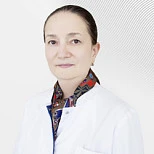








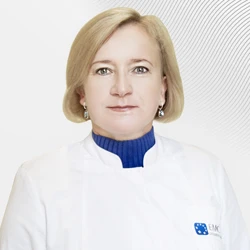


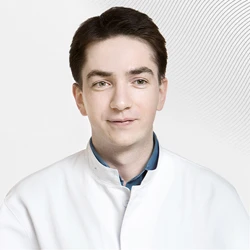
.webp)
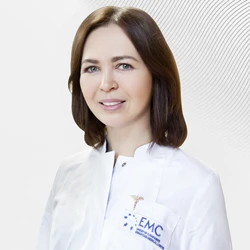

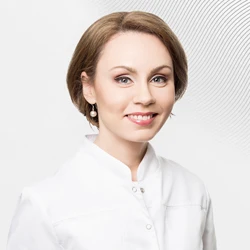

.webp)
